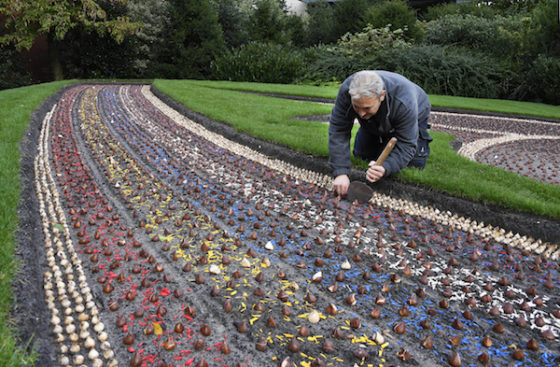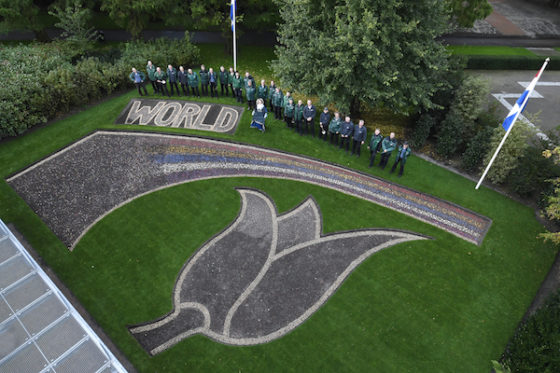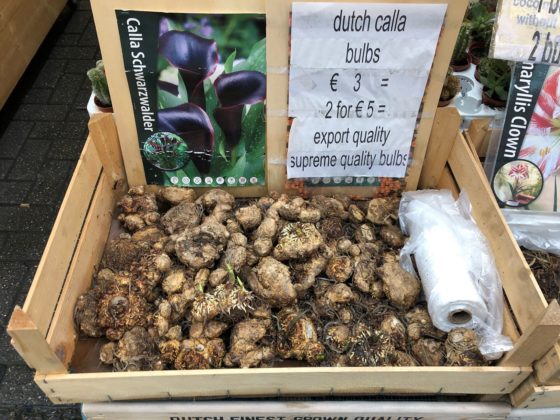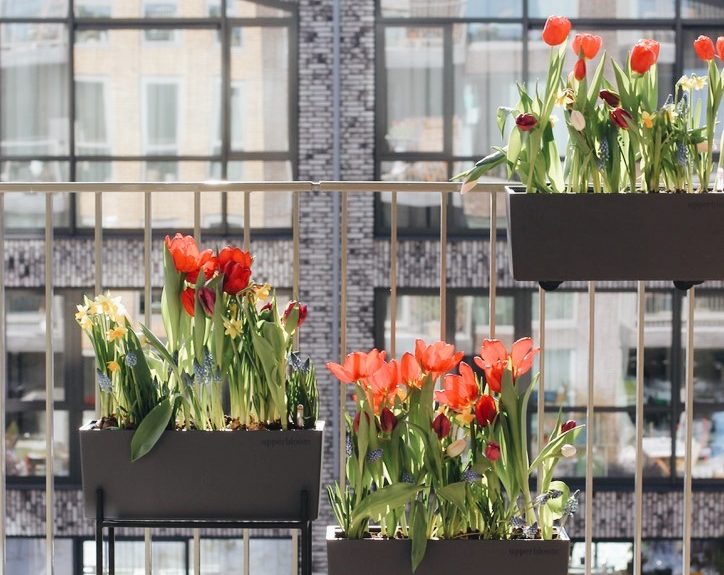Palinurus
The Living Force
Video 2:27
Herman Emmink - Tulips from Amsterdam (original, 1957)
1,046,413 views - July 30, 2008
Source: Tulip scam: Most bulbs sold at Amsterdam, Lisse flower markets won't grow
Other, more uplifting news:
‘Colors of the World’ on display at next year’s Keukenhof flower show - DutchNews.nl
1,046,413 views - July 30, 2008
Source: Tulip scam: Most bulbs sold at Amsterdam, Lisse flower markets won't grow
Tulip scam: Most bulbs sold at Amsterdam, Lisse flower markets won't grow
By Janene Pieters on October 16, 2019 - 11:00

Flower market in Amsterdam. (Photo: Phototraveller/DepositPhotos)
Most tulip bulbs sold at the popular flower markets in Amsterdam and Lisse never bloom, according to a study commissioned by the municipality of Amsterdam and the general association for flower bulb culture KAVB. "Research shows that there is structural deception of consumers when selling tulip bulbs at the Flower Market and the so-called 'Bloembollenboulevard' along the N208 in Lisse," the KAVB said in a statement [Dutch only].
The researchers bought tulip bulbs at both locations, the latter of the two translates to "Flower Bulb Boulevard," and tried to cultivate them. Only one percent of the bulbs bought in Amsterdam and two percent of those bought in Lisse blossomed. Moreover, it turned out that no tulip bought in Amsterdam matched the photo on the package, and nearly none of those from Lisse looked like the advertised flower.
Often the bulbs that are not sold before their expiry dates are not removed from store shelves, the city of Amsterdam said in a statement. An unsuspecting customer might purchase an expired bulb six months after its best buy date. "Someone who buys them and puts them in the ground, or even patiently waits until October to plant them, gets no results." The dried-out bulbs will not take root, something bulb sellers should know, the city said.
The KAVB is furious. "Millions of tourists and day-trippers are the victims of this every year. The tulip is our national symbol and the bulb sector is an important sector for the Dutch economy. As an association we think it is very bad that scammers structurally mislead consumers and damage the image of the bulb sector", said René le Clercq, general chair of the KAVB.
The municipality of Amsterdam, the KAVB and the municipality of Lisse asked the Dutch authority on consumers and markets ACM to investigate and tackle these abuses. "The flower bulbs are our cultural heritage with which we can welcome 1.5 million visitors every year", said Kees van der Zwet, an alderman in Lisse. "Then it cannot be that the Bloembollenboulevard sells products that do not blossom at all."
“The municipality of Amsterdam is concerned about deceived consumers and the damaging effect this has on the image of the Flower Market and the image of Amsterdam," said Amsterdam Centrum director Ilse Griek. "I think it is important that fair trade takes place, and that entrepreneurs keep their sales promises to Amsterdammers and visitors. ”
Other, more uplifting news:
‘Colors of the World’ on display at next year’s Keukenhof flower show - DutchNews.nl
‘Colors of the World’ on display at next year’s Keukenhof flower show
October 11, 2019 - By Saga Ringmar

Photo: Keukenhof
The Keukenhof bulb park is one of the most popular tourist destinations in the Netherlands and work is now beginning on getting ready for next year’s flowering season.
If you have any tulip bulbs that need planting, now is the time to do it. With summer officially over, the planting season has begun. This means the gardeners of the Keukenhof Botanical Garden have been hard at work setting up the flower display for next spring.
The center piece of the garden next year will be a 50 square meter mosaic made up of 50,000 tulip bulbs. The theme of next year’s flower show is ‘colors of the world’, and the mosaic will feature a massive tulip alongside a rainbow.
‘There are 1.5 million people visiting Keukenhof every year and they come from more than 100 countries,’ said Tom Schreuder, the commercial manager at the Keukenhof, ‘So we thought it was a beautiful theme to use all these colors with meanings and rituals from all over the world.’
Overcrowding
Though the diversity of Keukenhof’s tourists is something to celebrate, overcrowding can be a source of frustration for many visitors. When the garden opens its doors from March 21 to May 10, tourists travel to Keukenhof in droves.
This past spring saw chaotic traffic jams when over 200,000 tourists attempted to see the tulip park at the same time. Eventually the park had to discourage tourists from coming to visit, and cars were dissuaded from going close to the bulb growing region altogether.
Schreuder says the organizers will do their best to control the crowds next year.
‘Last year we were open for 61 days, and we had traffic problems on two days because of Easter and the beautiful weather,’ he said. ‘We hope it won’t happen again next year, but when the weather is beautiful the bulb fields are at their most beautiful and it will be busy in here.’

Photo: Keukenhof
To combat congestion, the park is investing money in directing visitors to public transport instead of using private cars and coaches. The park will also plan events on weekdays to encourage tourists to come on days that are less hectic.
The Keukenhof has has been popular since it first opened to the public in 1950 when 236,000 visitors turned up. But the origins of the park spans further back than that. The name ‘Keukenhof’ dates back to the 15th century when Countess Jacoba van Beieren would gather vegetables and fruit from the garden for the kitchen of Teylingen Castle. Hence the name ‘Keukenhof’ or ‘kitchen garden’.
The Keukenhof Castle, named after the garden, was built in 1641 and the estate eventually grew to encompass 200 hectares. Jan David Zocher and his son Louis Paul Zocher, two landscape artists most famous for designing Amsterdam’s Vondelpark, redesigned the Keukenhof garden in 1857.
Then, in 1949, a group of prominent flower bulb growers decided to use the estate to exhibit their flowers, and this is the park we know today.
This year, as the garden celebrated the official planting season, a woman working for Keukenhof dressed up as the Countess Jacoba van Beieren to pose for promotional photos. She argued that the countess would have been proud to see so many visitors to her beloved garden.
‘She was actually very much in love with her own land, and for her it would be a pleasure to see how many people visit these days,’ the 21st century ‘countess’ said.




